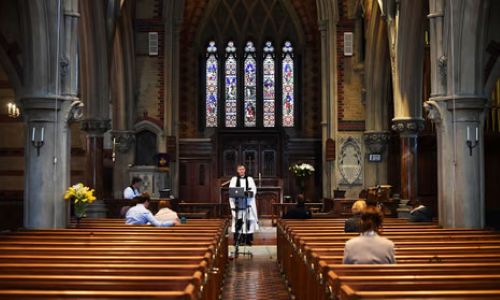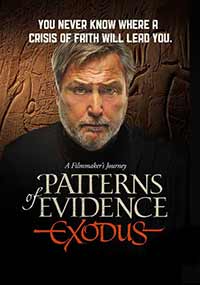Revival And Collapse: Two Sides Of America's Church Moment
 By PNW Staff October 06, 2025
By PNW Staff October 06, 2025
In the weeks since Charlie Kirk's death, something extraordinary has been stirring across America. Reports of revival are echoing through college campuses. Churches that once sat half-empty are filling up again. Young adults--some who hadn't darkened a church door in years--are showing up, praying, and asking hard questions about faith, evil, and eternity.
Yet at the very same time, another story is unfolding. Nearly 15,000 churches across the United States are expected to close their doors by the end of 2025. Once-thriving congregations are dwindling to nothing, sanctuaries are being sold off, and aging buildings that once echoed with hymns are now silent.
Two realities. One filled with hope, the other with heartbreak. How can both be true?
The Stirring of Revival
There's no denying it--something has awakened in America's spiritual bloodstream. College ministries are overflowing. Youth prayer meetings are spreading from campus to campus. People are once again talking about God in the grocery store, the classroom, the workplace.
For many, the shock of Charlie Kirk's death has served as a wake-up call--a reminder that no one is promised tomorrow. Suddenly, the questions that our culture had tried so hard to bury have risen again: What happens when we die? Why is evil so real? What am I living for?
Churches that preach truth and offer hope are finding that their pews can't hold everyone. Hearts are being moved, tears are being shed, and lives are being changed. It's not just emotion--it's hunger. A generation that was told they didn't need God is realizing they can't live without Him.
But Across Town--Churches Are Dying
Yet for every church experiencing revival, there are others on life support. Mainline Protestant denominations--Methodists, Presbyterians, Lutherans--are seeing congregations shutter at alarming rates. In some cases, entire regions are losing their local churches altogether.
Why this collapse?
Because somewhere along the way, many churches stopped preaching the Word of God. They traded conviction for comfort. Truth for tolerance. The cross for cultural relevance. Sanctuaries once filled with the sound of repentance and redemption are now draped in rainbow flags. Children's ministries once rooted in Scripture now feature storybooks celebrating sin rather than salvation.
People can sense when the Spirit is gone. Why show up for what amounts to a Sunday social club--one that entertains but never convicts, that affirms but never transforms? When a church becomes indistinguishable from the world, the world stops needing it.
The Megachurch Paradox
Even in the large evangelical sphere--where attendance is booming--there are warning signs. Many megachurches enjoy great influence, yet some struggle with spiritual depth. Their rapid growth often masks a constant churn of attendees--people who come for the music and energy but never find lasting community.
And when a charismatic pastor falls or dies, many of these churches collapse overnight. They were built on personalities, not pillars. Revival rooted in hype will fade. Revival rooted in holiness will stand.
We've Been Here Before
This isn't the first time America has faced a moment like this. After the September 11th terrorist attacks, church attendance across the nation surged. Sanctuaries were packed. Americans turned to God in shock and fear. For a few short weeks, the words "God bless America" were more than a slogan--they were a desperate prayer.
But as months passed and the news cycle moved on, many returned to life as usual. The surge faded. The repentance waned. Churches that had seen record attendance quietly emptied again.
The lesson is clear: fear can awaken us, but only faith can sustain us. A revival sparked by tragedy must be followed by discipleship, or it will vanish as quickly as it began.
The Battle for the Soul of the Church
What we are witnessing now may be a spiritual dividing line. God is pruning His Church. Those that have compromised are withering; those that remain faithful are bearing fruit.
The modern church stands at a crossroads. One path leads to relevance without reverence--to churches that preach inclusion but not repentance, tolerance but not truth. That road ends in closure.
The other path is narrower but alive with power--the path of uncompromising Scripture, Spirit-filled worship, and gospel-centered preaching. These are the churches that are growing, even amid cultural hostility. They are not perfect, but they are alive.
The difference is simple: one has form without fire, the other has fire without fear.
What Comes Next
If this post-Kirk revival is real--and not just emotional reaction--it will demand more than crowded services. It will require churches to go deeper. To disciple, not just entertain. To speak truth, not just comfort. To raise up young believers who can stand firm in a world that despises biblical conviction.
It means pastors preaching repentance without apology. Parents teaching their children the Word of God at home. Believers resisting the temptation to make church a show rather than a sanctuary.
The American Church doesn't need another marketing strategy--it needs a move of God.
A Time to Choose
We stand in a defining hour. The closing of thousands of churches is not the death of the Church--it's the pruning of it. The wheat is being separated from the chaff.
Out of this shaking, a remnant is rising--a generation that has seen the emptiness of culture and is reaching again for eternal truth. What began in sorrow after Charlie Kirk's death may become the spark of a lasting renewal--if we have the courage to return to the Word of God without compromise.
The question every believer must now ask is simple: Will we settle for religion without power, or return to the Gospel that changes everything?
Because revival will not come from the churches that try to please the world. It will come from those who still believe in the power of God's Word to save it.






